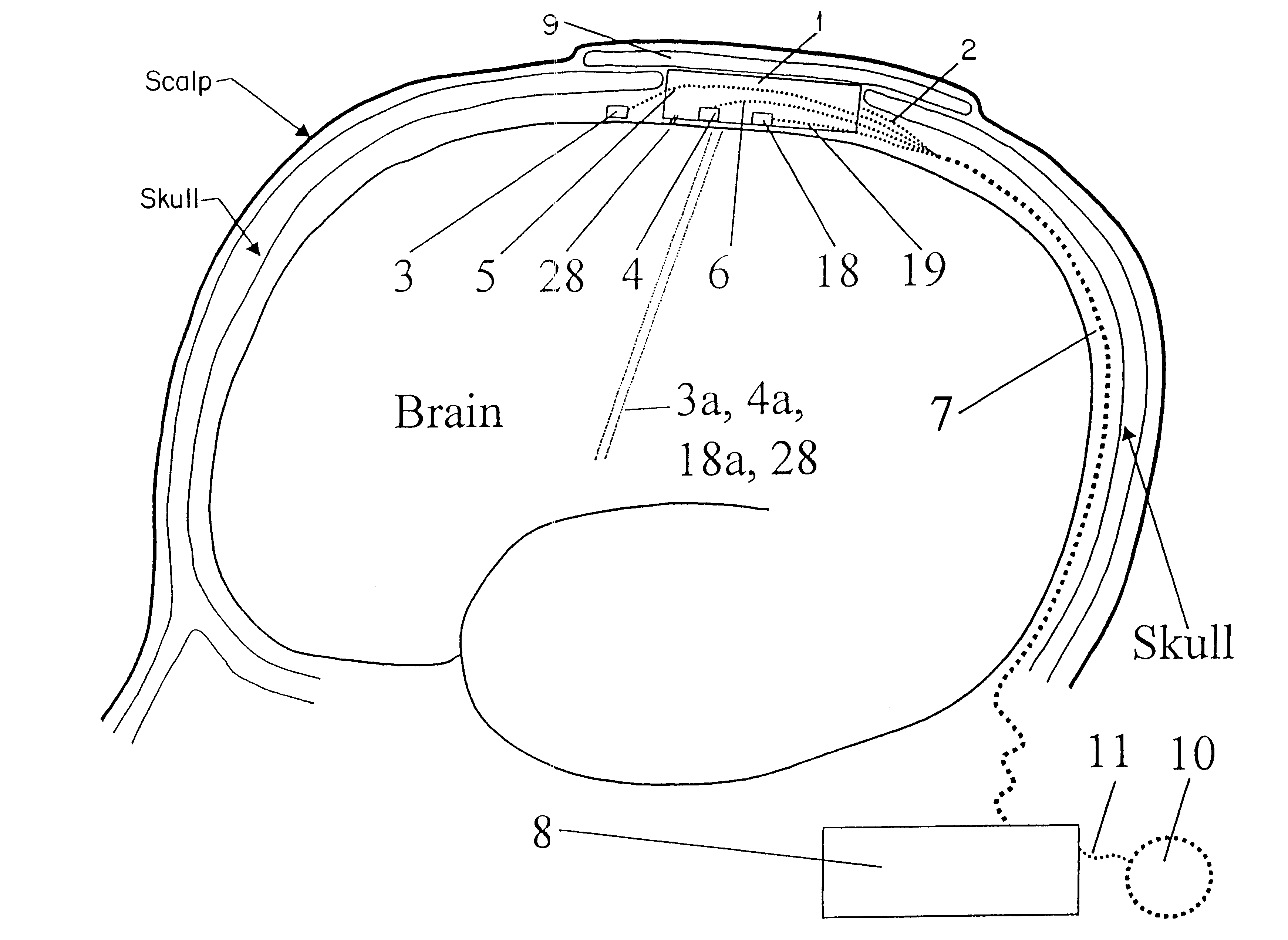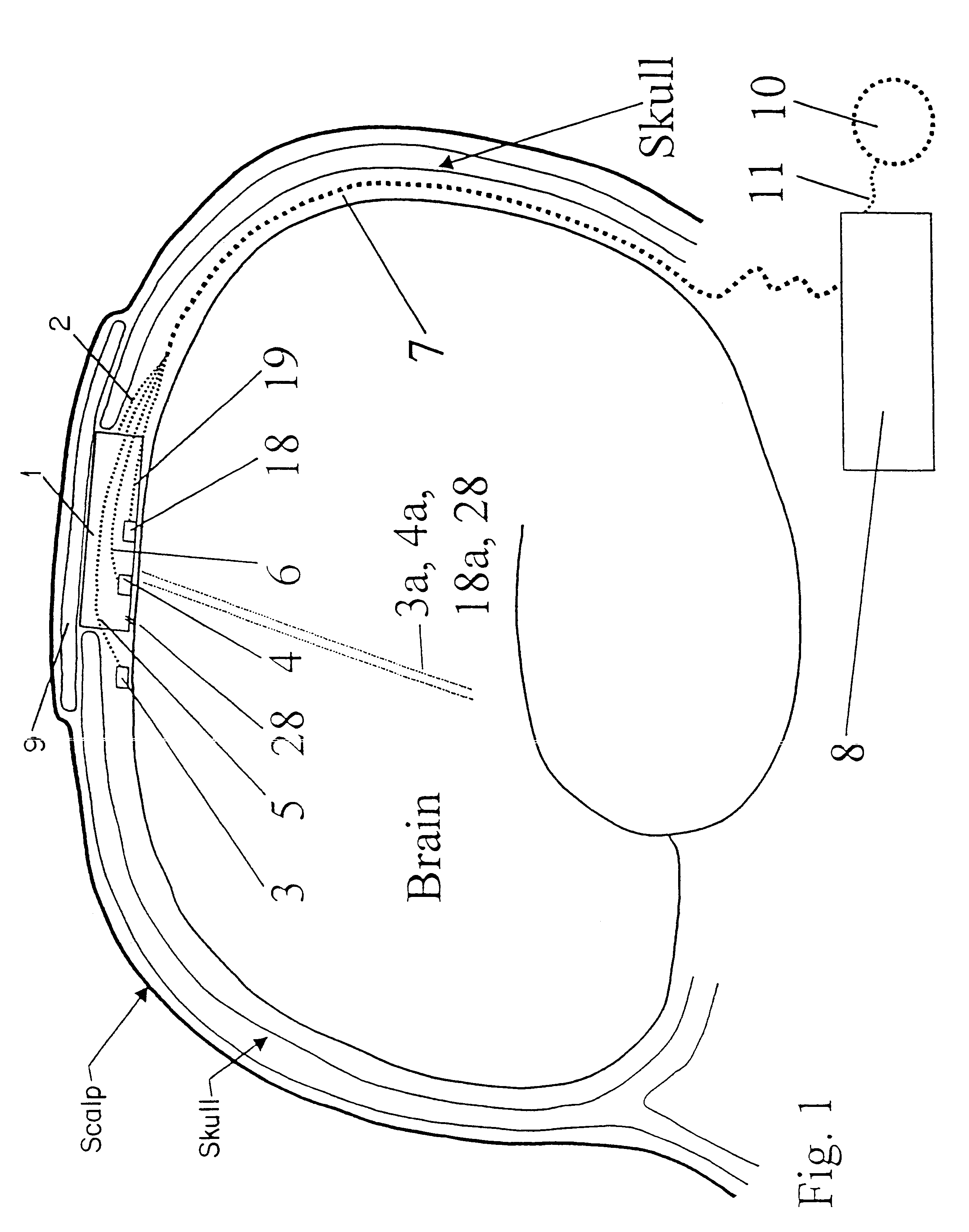Technique for using heat flow management to treat brain disorders
a technology of brain disorders and heat flow, applied in the field of brain disorders that require acute treatment, can solve the problems of rarely controlling seizures completely, significant health problems, and significant epilepsy
- Summary
- Abstract
- Description
- Claims
- Application Information
AI Technical Summary
Benefits of technology
Problems solved by technology
Method used
Image
Examples
example
The effects of cooling neural tissue on seizure development were investigated using an EAAC1 knockout rat model of epilepsy. EACC1 antisense DNA was continuously infused into the left ventricle of a test animal for 10 days using a pump located on the animal's back. Diffuse glutamate toxicity is thereby effected in the brain of the knockout rat. Diffuse glutamate activity produced seizures, manifested by activity arrest, staring, and rhythmic 2-3 / sec epileptiform EEG patterns, all indicative of seizure activity. Thereafter, the test animal was anesthetized and a cooling unit adhered to the rat's head. Due to the thinness of rat crania, cooling of the brain was achieved through the intact rat skull. EEG tracings were made at baseline (28.8.degree. C.) and hypothermic (25.2.degree. C.) temperatures of the conscious rat. An overall reduction in seizure activity was observed after cooling, marked by the return of normal exploratory behavior and normal EEG tracings.
While the invention has...
PUM
 Login to View More
Login to View More Abstract
Description
Claims
Application Information
 Login to View More
Login to View More - R&D
- Intellectual Property
- Life Sciences
- Materials
- Tech Scout
- Unparalleled Data Quality
- Higher Quality Content
- 60% Fewer Hallucinations
Browse by: Latest US Patents, China's latest patents, Technical Efficacy Thesaurus, Application Domain, Technology Topic, Popular Technical Reports.
© 2025 PatSnap. All rights reserved.Legal|Privacy policy|Modern Slavery Act Transparency Statement|Sitemap|About US| Contact US: help@patsnap.com



